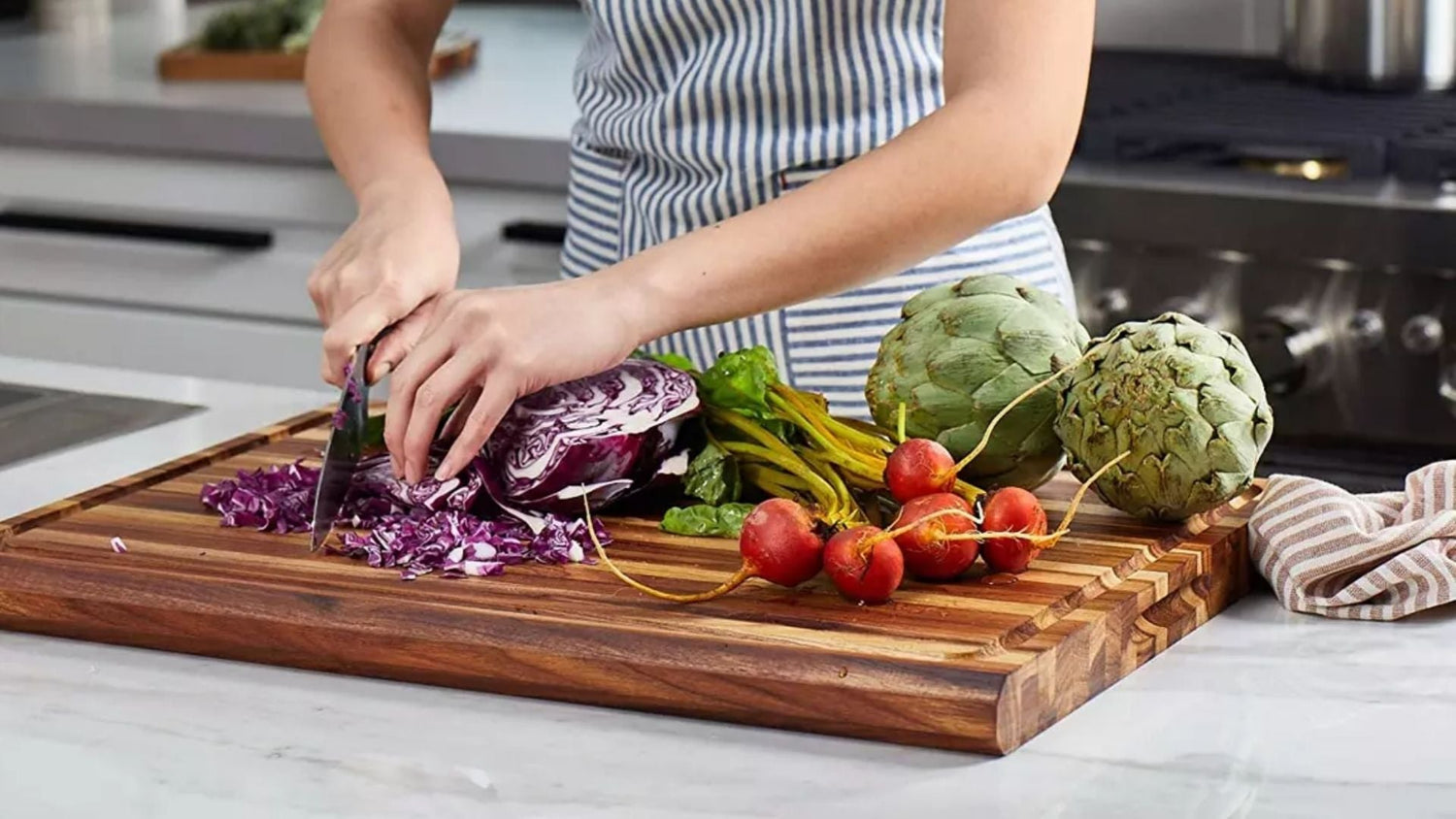For kitchen professionals, maintaining a clean and hygienic workspace is paramount. When it comes to beloved tools like wooden cutting boards, dealing with an unexpected hitch - mold - can be frustrating but necessary. Mold doesnt just compromise the appearance of your cutting board, it also poses potential health risks. Tackling this issue efficiently requires a methodical approach, which is why were diving into how to get mold out of wood cutting board effectively. Read on to learn step-by-step techniques and pro tips tailored to keep your cutting boards safe and sanitary!

Why Does Mold Appear on Wooden Cutting Boards?
Mold thrives in environments that are damp and poorly ventilated. Since wooden cutting boards are porous, they tend to absorb water and juices from your food, especially if not cleaned or dried properly. For professionals who work with these boards every day, understanding this vulnerability is key to preventing mold formation in the first place.
Over time, small cracks or scratches on the wood can accumulate moisture and food particles, creating a haven for mold. Regular care and cleaning are hence necessary to extend the life of your board and to ensure hygiene.
Step-by-Step Process to Remove Mold from Wooden Cutting Boards
Supplies Youll Need
- Distilled white vinegar or lemon juice
- Baking soda
- A soft-bristle brush
- Clean and dry cloth
- Food-safe mineral oil (for conditioning)
1. Scrape Off Visible Mold
The first step is mechanically removing any surface mold. Using a soft-bristle brush or scraper, gently eliminate loose mold without digging into the wood itself. This gives you a clean slate to apply cleaning solutions effectively.
2. Create a Cleaning Solution
Mix equal parts of distilled white vinegar with water, or squeeze some fresh lemon juice for a natural mold cleaner. Vinegar and lemon have antibacterial properties and are excellent to combat fungi.
3. Apply the Solution
Using a clean cloth or soft brush, apply this solution to the mold-affected areas. Scrub gently but thoroughly to reach deeper into the woods pores where mold might be hiding.
4. Rinse and Dry Completely
After scrubbing, rinse your wooden cutting board carefully under warm water. Make sure to dry it promptly using a clean towel. Leaving it to air dry entirely before proceeding is crucial.
5. Use Baking Soda for Extra Cleaning
If a stubborn mold stain persists, sprinkle baking soda over the affected area. Add a bit of water to create a paste and scrub again. Baking soda is excellent at neutralizing odors and removing deep-seated mold.
6. Sand the Surface (if Necessary)
In cases where mold has deeply penetrated the board, gently sanding the surface with fine-grit sandpaper can rejuvenate the wood. Once sanded, you can proceed with step 7.
7. Condition Your Board
Once its clean and dry, apply a thin coat of food-safe mineral oil or cutting board conditioner. This protects the wood from future moisture buildup and helps prevent mold. Learn more about conditioning your board here.
How to Prevent Mold on Wooden Cutting Boards
Prevention is always better than cure. Below are some tips to keep your wooden cutting boards mold-free:
- Regular Cleaning: Clean your board thoroughly after each use with warm soapy water. Never soak it in water!
- Dry Immediately: Use a towel to remove excess water, and always place it in a well-ventilated area.
- Oil Regularly: Oiling your board once every few weeks helps seal the wood and minimizes moisture absorption. Read about the best oils to use here.
- Avoid Cross-Contamination: Designate separate boards for raw meat and vegetables to prevent bacteria build-up.
When to Replace Your Wooden Cutting Board
No matter how well you take care of your cutting board, it can only last so long. Excessive warping, deep cracks, or discoloration that doesnt fade despite cleaning can mean its time for a replacement. If mold continues to return despite your best efforts, thats your signal to bid goodbye to your board.
In such cases, consider alternatives that might suit your needs better. Heres an article that can guide your choice: Plastic Cutting Boards.

FAQs About How to Get Mold Out of Wood Cutting Board
1. Can I use bleach to remove mold from my cutting board?
Using bleach is not recommended due to potential toxicity and damage to the wood. Stick to natural options like vinegar or lemon juice.
2. How often should I oil my wooden cutting board?
To keep it in good shape and prevent moisture absorption, oil your board every 2-3 weeks or whenever it appears dry.
3. What should I do if the mold smell persists?
Use baking soda with a bit of water to scrub the board, then rinse and dry thoroughly. If the smell doesnt disappear, consider sanding the surface lightly.
For more detailed guides on cutting board care, check out this insightful resource: Cutting Board Safety.
This article contains affiliate links. We may earn a commission at no extra cost to you.




Leave a comment
This site is protected by hCaptcha and the hCaptcha Privacy Policy and Terms of Service apply.